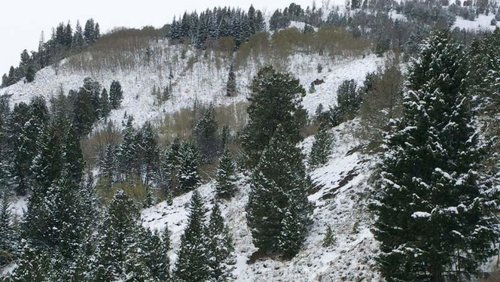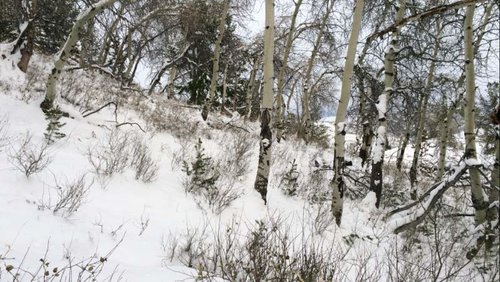Paul in Idaho
Well-known member
I have put several miles on my boots this season in search of mule deer, but have found none. On opening day I saw bighorns, and yesterday I saw elk. So far my focus has been in the 8000 - 9600 elevation range. In this area, elevations higher than that are just rock.
On yesterday's evening hunt, I walked up to about 8800' in powder snow ranging from 7-9 inches. It was overcast, about 30 degrees, with occasional snow flurries. Closer down to where I had parked, there were tracks near the road probably from a group of does, and a little bit higher two single deer-size trails sidehilling toward a brushy draw. The snow had fallen the day before so likely there were a few deer in the area.
At sunset, I was watching a herd of elk 300 yards away. I found a great glassing spot that allowed me to watch an aspen stand, open sage, and timber. No deer.
As I was glassing, I started wondering more about what snow conditions will push bucks lower. Probably a heavy crust on a few inches of snow would do it. Since the deer trails I saw were sidehill, not descending, probably the current snow conditions aren't pushing them down.
I'd be interested to hear your thoughts on how much loose snow would be enough to make the mature bucks start heading for lower country. Seeing elk at my elevation made me think maybe I was too high.
Here's a couple photos of yesterday's spot. I think it's one of the best muley spots I have found, but after so many seasons of not seeing deer I doubt my judgement on what makes a good spot.


On yesterday's evening hunt, I walked up to about 8800' in powder snow ranging from 7-9 inches. It was overcast, about 30 degrees, with occasional snow flurries. Closer down to where I had parked, there were tracks near the road probably from a group of does, and a little bit higher two single deer-size trails sidehilling toward a brushy draw. The snow had fallen the day before so likely there were a few deer in the area.
At sunset, I was watching a herd of elk 300 yards away. I found a great glassing spot that allowed me to watch an aspen stand, open sage, and timber. No deer.
As I was glassing, I started wondering more about what snow conditions will push bucks lower. Probably a heavy crust on a few inches of snow would do it. Since the deer trails I saw were sidehill, not descending, probably the current snow conditions aren't pushing them down.
I'd be interested to hear your thoughts on how much loose snow would be enough to make the mature bucks start heading for lower country. Seeing elk at my elevation made me think maybe I was too high.
Here's a couple photos of yesterday's spot. I think it's one of the best muley spots I have found, but after so many seasons of not seeing deer I doubt my judgement on what makes a good spot.






